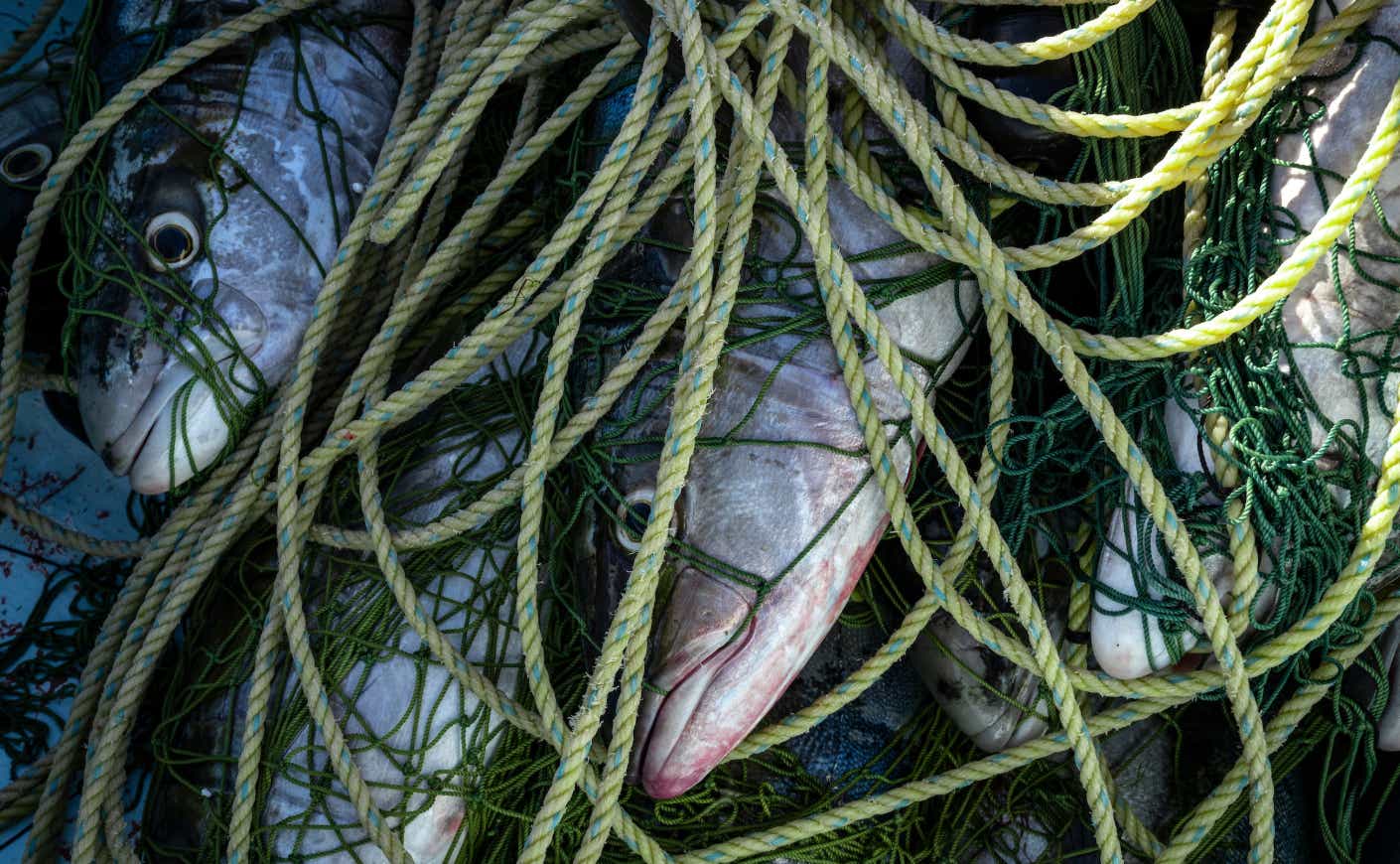Anyone who has spent time near the ocean has experienced its magic. The way it stretches across the horizon, seemingly infinite, humbles you. Its vastness is almost impossible to comprehend. Those who dare to dip below the surface are rewarded even further with a glimpse into another world.
As a kid, I wanted nothing more than to swim with dolphins. That’s how the dream began, at least, to become a marine biologist. There weren’t many paths for marine biology at my Mexican university back then, so I enrolled in the closest thing possible: fisheries science.
At the time, I didn’t realize those early studies would reveal just how destructive industrial fishing is. With all I had learned, I knew I couldn’t stand by while humanity destroyed the oceans.

World Oceans Day is on June 8, and in fact, all of June is World Oceans Month. These special waters cover around 70% of our planet. They regulate our climate, provide more than half of the world’s oxygen, feed billions, and sustain all life on Earth. A month of celebration is the least we can offer them.
This year’s theme is “wonder: sustaining what sustains us,” and to truly sustain the ocean, we have to change how we fish.
Industrial fishing is one of the biggest threats to our oceans, with many fish populations being caught at unsustainable rates. Bottom trawling is among the worst offenders, scraping entire seabeds clean with nets the size of football fields. The vast majority of what they capture is bycatch, including sharks, sea turtles, and other endangered species. Imagine bulldozing a forest to pick a single apple. That’s bottom trawling.
Another core issue is that industrial fishing is often unregulated and plagued by corruption. Foreign vessels routinely fish illegally, especially in waters of poorer nations, and enforcement is nearly nonexistent.
In Africa, European and Chinese fleets exploit national waters, sometimes flying an African country’s flag through corrupt deals with local governments. If caught, these vessels can simply change their names or switch ships. Local fishers are left with empty nets, and their food security and livelihoods are eroded.
Similarly, in Antarctica, “super-trawlers” are harvesting massive quantities of krill — tiny crustaceans that form the foundation of the Antarctic food chain. These ships often operate in biologically rich areas that Antarctica’s governing body, CCAMLR, has failed to regulate. When krill are overfished here, the entire ecosystem suffers.
But how does this translate to our plates?
Certifications like the Marine Stewardship Council (MSC) and Friend of the Sea (FOS) aim to guide us towards sustainable seafood consumption decisions. But even they are problematic. Their certifications rely on an outdated scientific model, called Maximum Sustainable Yield (MSY). The goal of MSY is to exploit the most fish possible without collapsing the population. Still, the model is risky and flawed because it ignores the complexity of marine ecosystems and the interactions of species within them.
What’s shocking is that MSC even certifies bottom trawling!

All of this is leading us on a dangerous path toward global-scale fisheries collapse, and we’ve seen it happen before.
Take the Atlantic cod fishery. Canadian communities sustainably fished cod using traditional methods for centuries. But when industrial trawlers arrived in the 1950s, everything changed. Catches skyrocketed from 250,000 to over 800,000 tonnes annually by the 1960s. Warning signs were ignored, and by 1992, the fishery collapsed. It took only a few decades of industrial fishing to destroy what had survived centuries of traditional use. To this day, cod populations haven’t recovered.
We haven’t learned our lesson. Scientists are now raising alarms about other major fisheries approaching collapse. We risk repeating history — only this time, on a global scale.
But abandoning seafood isn’t the solution. Fish are a critical source of nutrition and livelihood for billions. What we need is a radical transformation of how we fish.
Last year, 30 leading ocean experts released “11 golden rules” for sustainable fishing. These go beyond outdated science and offer a more holistic vision that protects ecosystems, respects communities, and supports food security.

Marine conservation and fishing can coexist. Off Baja California Sur, I’ve worked with organizations advocating for the Dos Mares Biosphere Reserve. It wouldn’t ban all fishing, just industrial fishing. Thousands of local fishers support it. Their oceans have been depleted by industrial fleets, and they understand the need for change.
Artisanal, small-scale fishers have stewarded the ocean for generations. They use traditional, low-impact methods, and their communities depend on the long-term health of the sea. Supporting them means supporting sustainability.
We can live in harmony with the ocean. We can thrive from its bounty without destroying it. You don’t have to give up seafood to protect the ocean. But knowing where your seafood comes from absolutely matters — and that’s the first step toward sustaining what sustains us on this World Oceans Day.
Paul Nicklen and Cristina Mittermeier co-founded SeaLegacy in 2014. SeaLegacy’s mission is to inspire people to fall in love with the ocean, amplify a network of changemakers around the world, and catalyze hands-on diplomacy through hopeful, world-class visual storytelling. For more updates on their meaningful work, learn more about SeaLegacy, and subscribe to Ripple Effect, Katie Couric Media’s sustainability newsletter.









